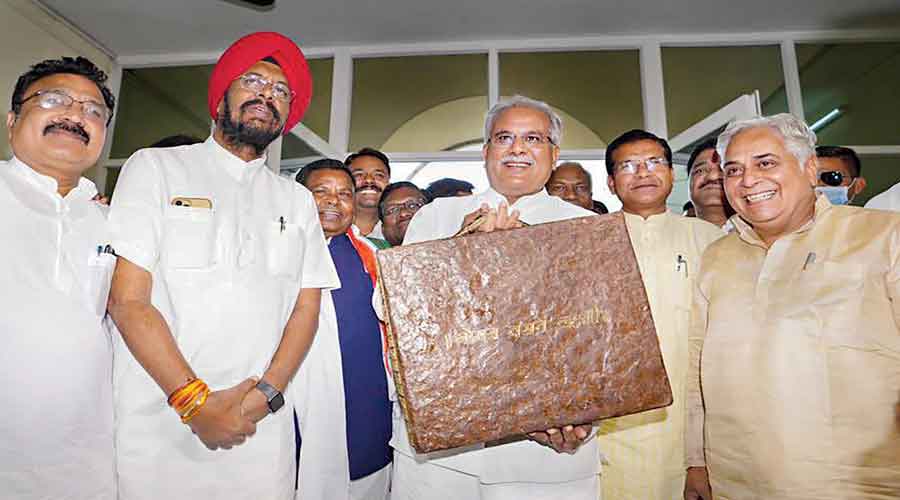The Congress government in Chhattisgarh on Wednesday restored the old pension scheme, becoming the second state after Rajasthan to meet the growing demand from government employees.
Chhattisgarh chief minister Bhupesh Baghel made the announcement in his budget speech in the Assembly, prompting his party to flaunt its sensitivity to government employees’ demands.
The Congress is using the issue to attack the BJP, alleging the new pension scheme — introduced by the Atal Bihari Vajpayee government — hurts employees.
The demand for a return to the old pension scheme has been snowballing across the country since the Samajwadi Party’s Assembly poll manifesto promised to restore it.
Demonstrations have begun in states such as Madhya Pradesh, Himachal Pradesh and Jharkhand while Andhra Pradesh has already initiated the process to restore the old pension scheme. Kerala has formed a committee to look into the matter.
The Vajpayee government had scrapped the old pension scheme in December 2003 and replaced it with the National Pension Scheme (NPS), which came into effect from April 1, 2004.
Critics of the NPS say the government’s intention behind implementing it was to get rid of its huge pension liabilities. But many experts have argued that the pension debts had reached unmanageable levels and required reforms.
Some experts have suggested that the states’ finances are too precarious to share the additional burden and that those returning to the old scheme have been doing so without conducting adequate studies. Many of them have termed the move populist and anti-reform.
The NPS allows government employees to decide where they want to invest their money by contributing regularly to a pension account throughout their career. After retirement, they can withdraw a part of the pension amount and use the rest to buy an annuity for a regular income.
The old pension scheme didn’t rely on investment returns. In the NPS, the government and employees contribute an equal portion towards the pension fund. Under the old scheme, 50 per cent of the last drawn salary was paid as pension.










